We usually hear it first, we’ll be sitting in our living room or maybe bedroom at night with the lights on when suddenly there’s a bang against the window. Whether we go out to look at what happened immediately or wait until the next day doesn’t matter, either way we’ll often find a small dead bird lying on the ground beneath the window.

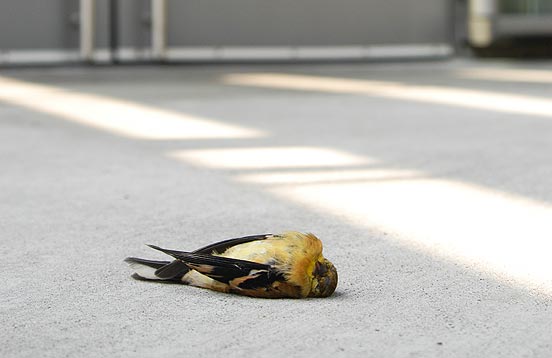
It’s easy to understand what happens, of course birds can’t understand what either artificial lights or transparent glass are and so they get confused and fly straight into our window, to deadly effect. And if this tragedy happens once or twice a year for a residential home it happens nightly for those tall office buildings with hundreds of brightly lit windows that remain on all night long.
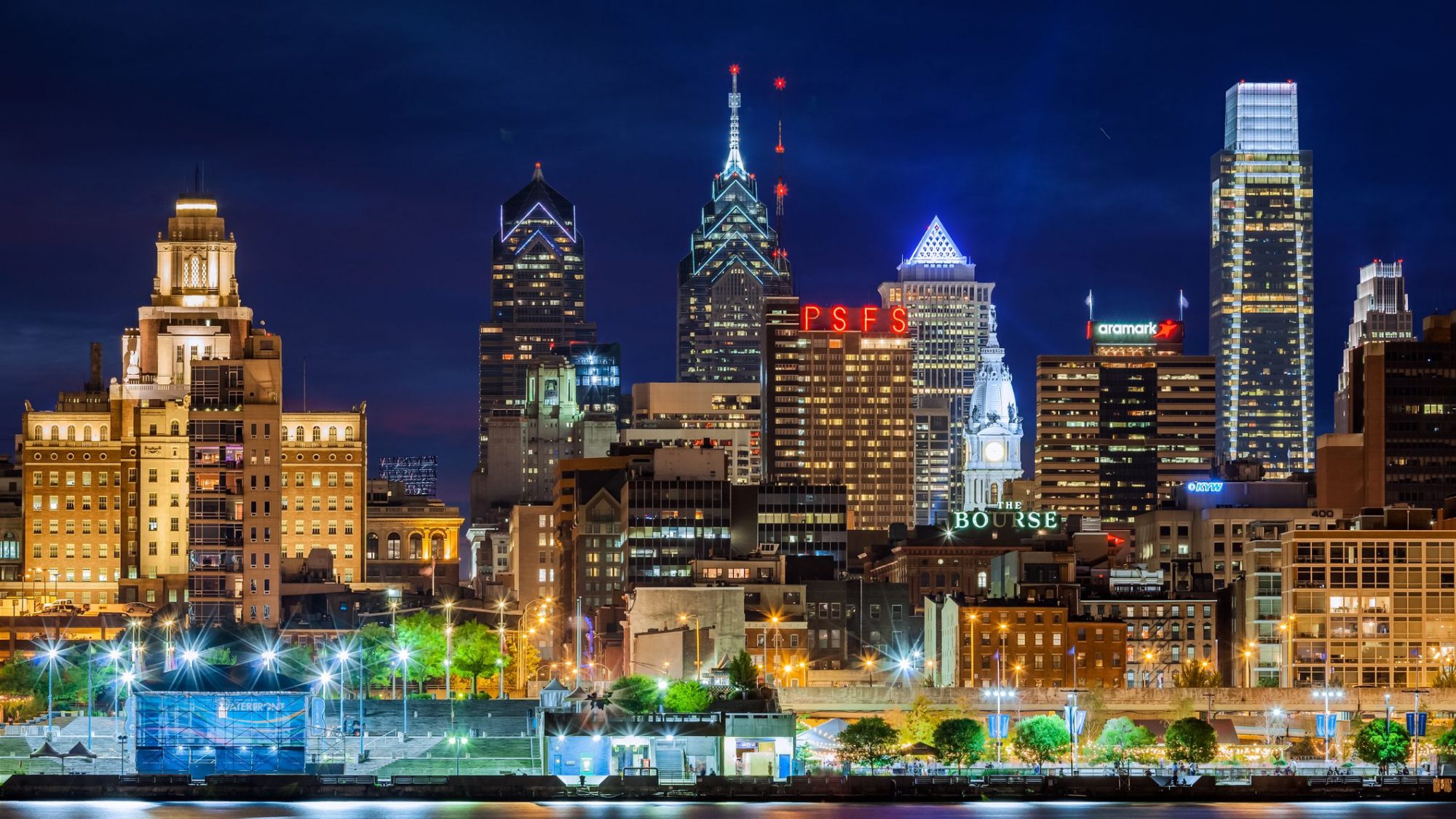
There are also certain times of year when the problem becomes even worse because millions of birds that are not regular city dwellers like pigeons or starlings migrate through populated areas resulting in thousands of completely unnecessary deaths. My hometown of Philadelphia lies right along North America’s east coast bird migratory route and last fall the city saw an especially terrible night on the second of October. Because of bad weather combining with a large number of migrants passing through the city an estimated 14,000 birds died in a single night. In fact Philadelphia has a long history of studying such accidental bird kills with the Academy of Natural Sciences preserving specimens of birds who died by crashing into buildings dating back as far as the 1890s.
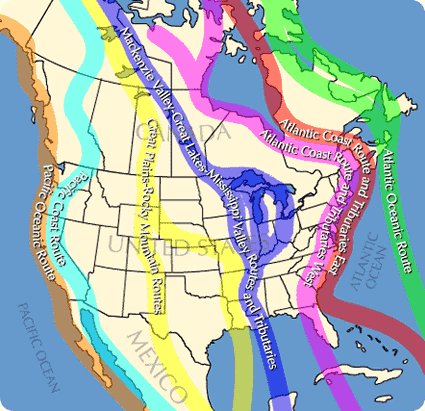
Last year’s high death toll may have had something to do with the decision by civic leaders to add Philadelphia to the growing list of cities that participate in the National Lights Out initiative. National Lights Out is a concerted effort by both naturalists and business leaders to just turn off as many unnecessary lights as possible, especially those in high rise office buildings. Think about it, what use is anybody getting by having all of the lights on in an empty, let’s say accounting firm on the 20th floor of some skyscraper. It’s a waste of energy and money as well as being a danger to innocent birds and all it takes is someone remembering to turn out the lights when they go home for the night.
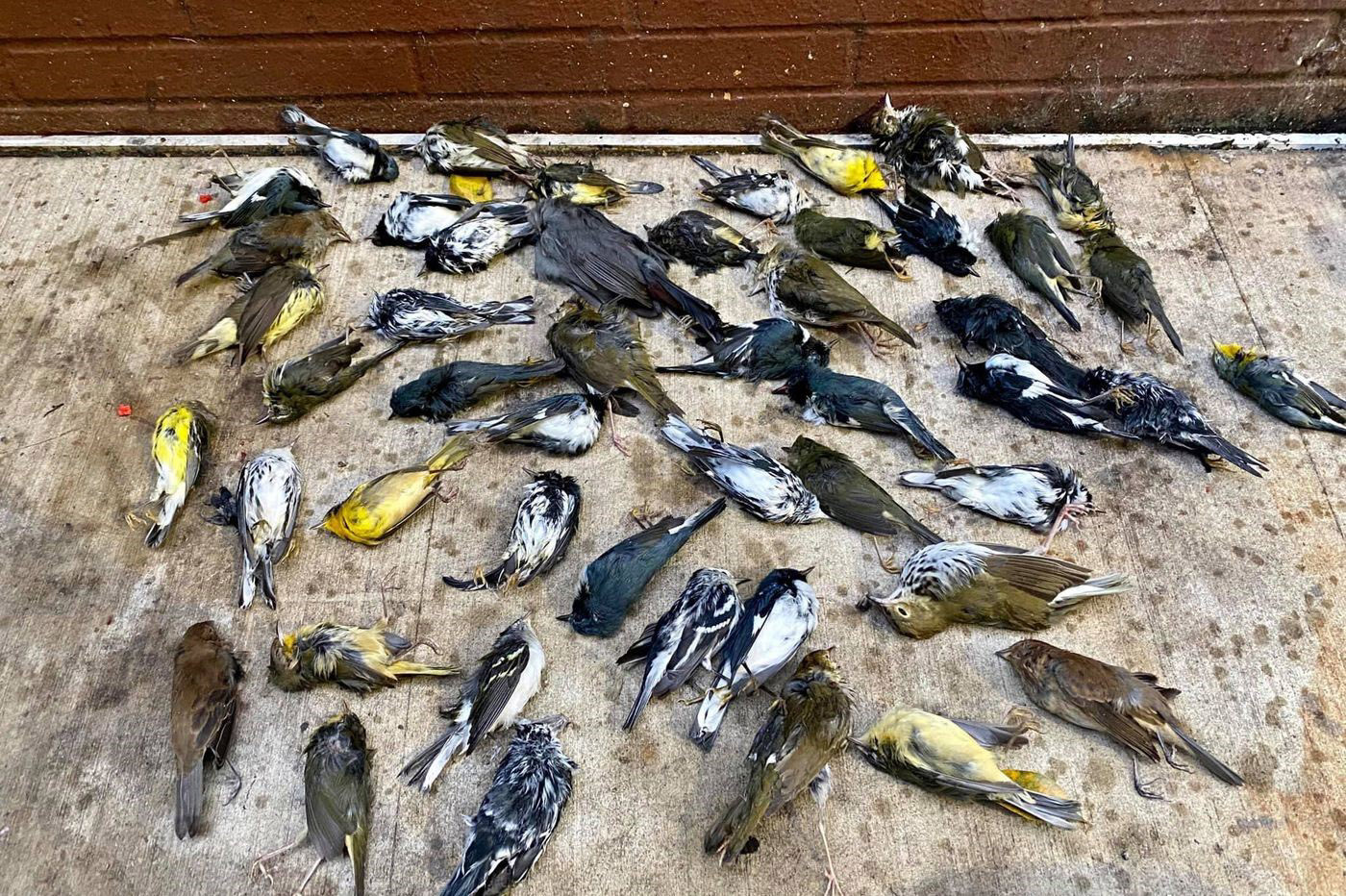
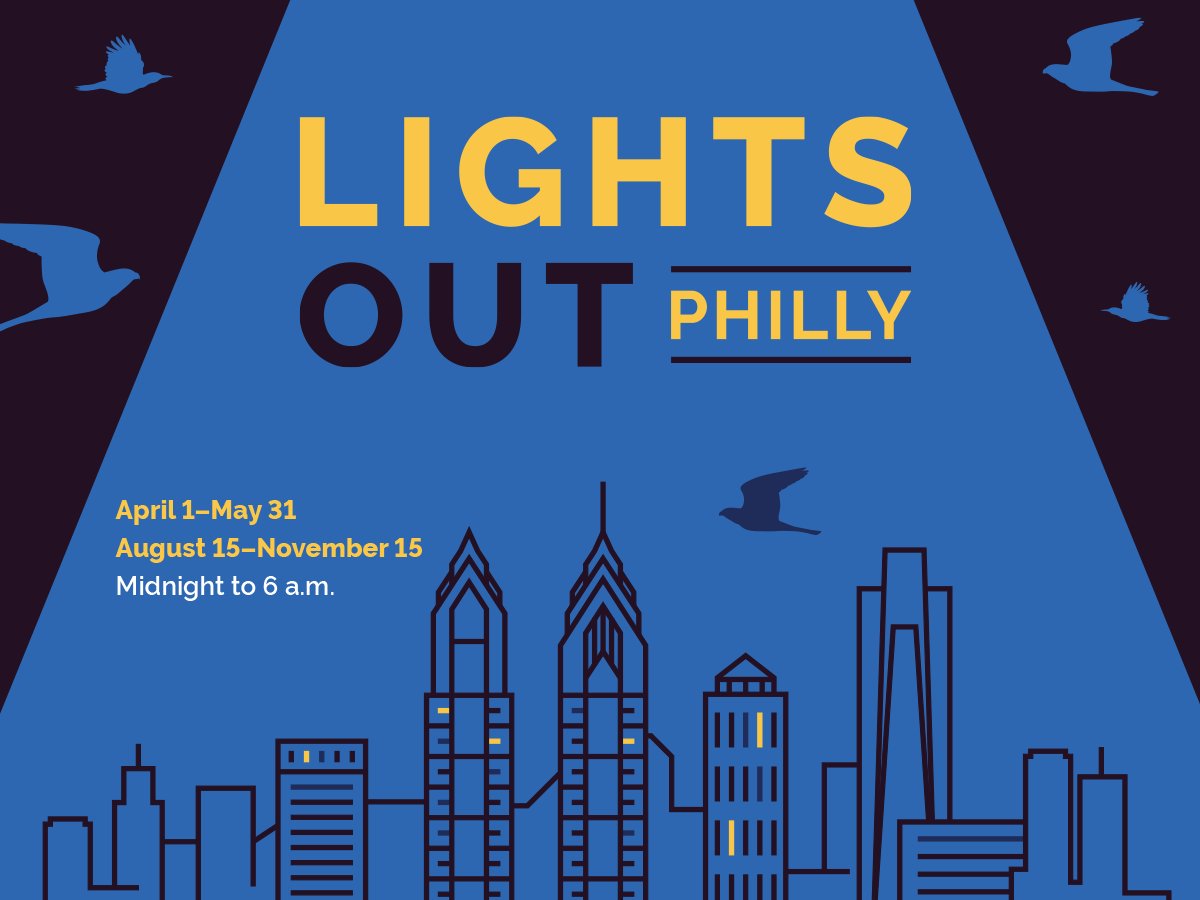
Now participation is voluntary, our city council is considering a bill to promote the initiative but there’ll be no penalty for those businesses that fail to join in. The effort to convince landlords and tenants to join in is being led by the Delaware Valley Ornithological Club and the Mid-Atlantic chapter of the Audubon Society along with the Academy of Natural Sciences of Drexel University.
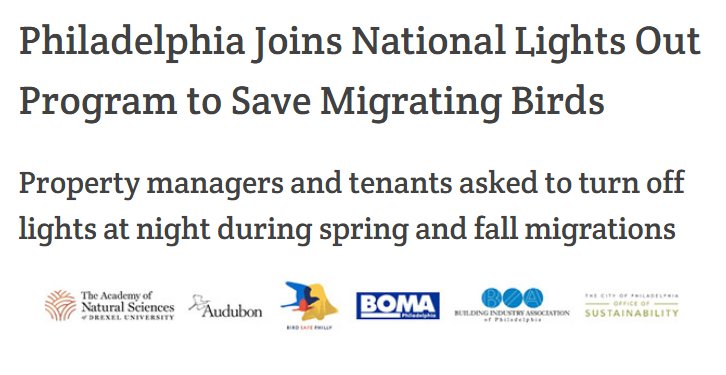
The movement has also gained the support of our local Building Owners and Managers Association (BOMA) and the Building Industry Association of Philadelphia. So far these organizations have succeeded in recruiting some of the biggest businesses in Philadelphia to take part including Comcast Corporation, owner of the two tallest buildings in the city. Also pledging their support are Brandywine Realty the city’s largest landowner as well as more than a dozen other building owners or operators.

Now Philadelphia is not the only city getting into the National Lights Out effort, in fact we’re actually kinda late in joining in. The first city to take part was Chicago back in the year 1999 and since then New York, Boston, Baltimore, Washington D.C. and some thirty other cities have taken part.
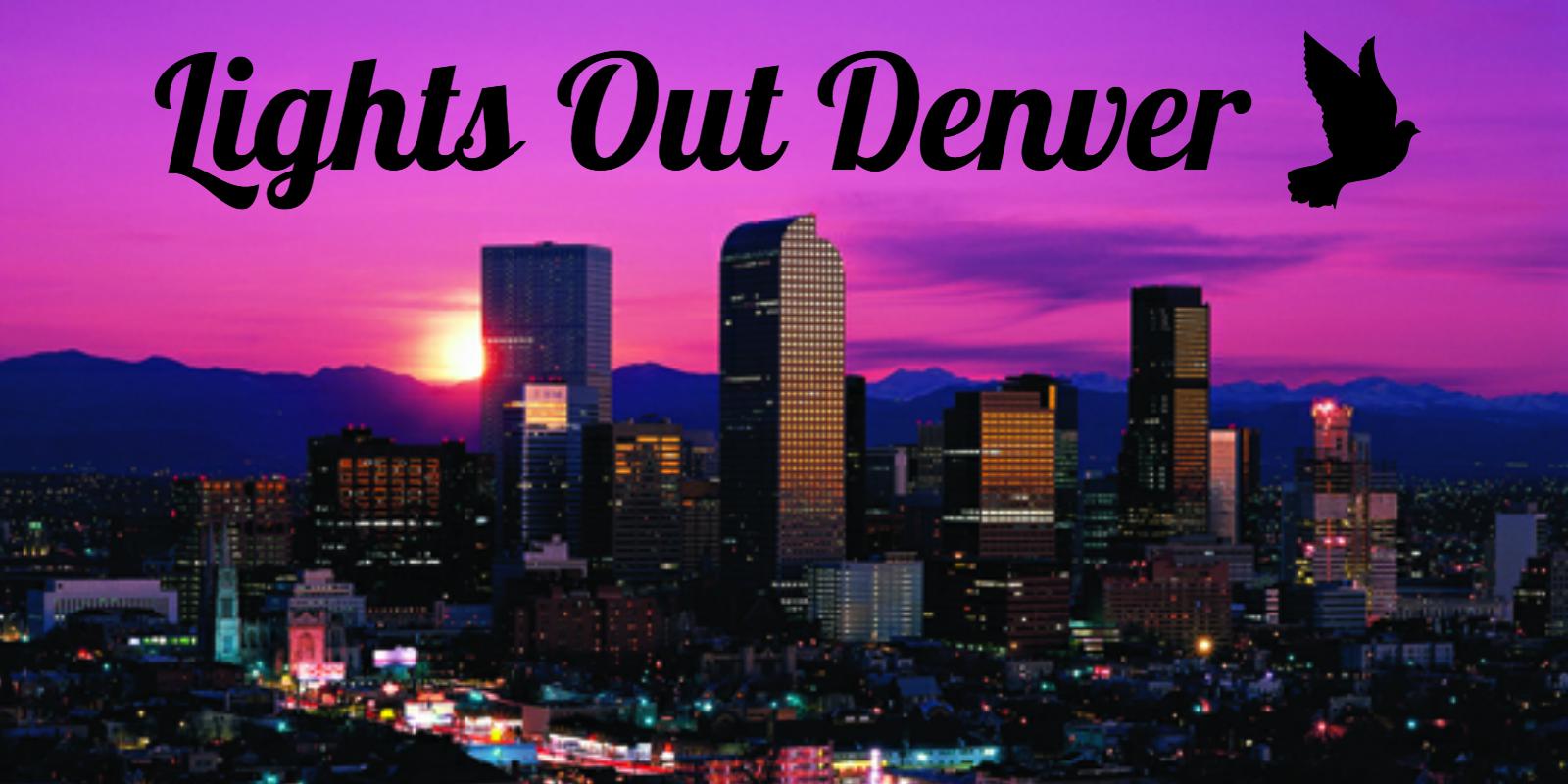
As I mentioned above migration periods are the critical times for the National Lights Out initiative. For most North American cities that means April and May in the spring as the birds fly north and August 15th to November 15th as they fly south. But really at any time of year how much effort does it take to remember to turn out the lights when everybody has gone home for the night? It saves energy, saves money, eliminates some greenhouse gasses as well as saving the lives of some birds.
And before I go I’m going to add one more reason to turn out the lights, light pollution. I my opinion the night sky is simply beautiful but you can’t see it in a city because of all the glow from artificial lights. Really, on a good clear night you should be able to see about three thousand stars along with a planet or two and the pale wisp of the Milky Way. When I step outside my house here in Philly however I’m lucky to see a couple of dozen stars and forget about any sign of the Milky Way. That’s because of all the streetlights, lights from nearby businesses as well as lights from my neighbor’s homes. I have seen the night sky from a darkened Navy Destroyer in the middle of the Atlantic, from the desert of Arizona more than a hundred kilometers from any town and from the high peaks of the Rockies and I can tell you that the night sky near any big city pales in comparison because of all that light pollution.
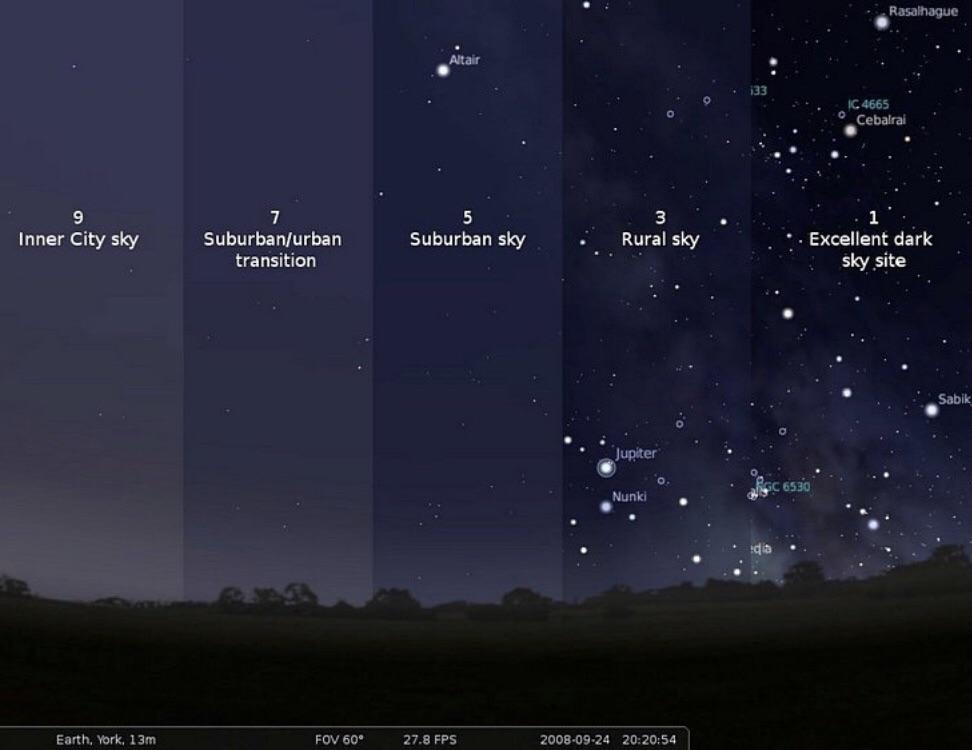

In fact backyard astronomers like me have even started an initiative of our own, the ‘Dark Skies’ project to turn off or reduce all of the unnecessary artificial lights so that we can enjoy the beautiful natural lights that the Universe has provided us. Who knows, maybe I’ll write a post about that before too long.
